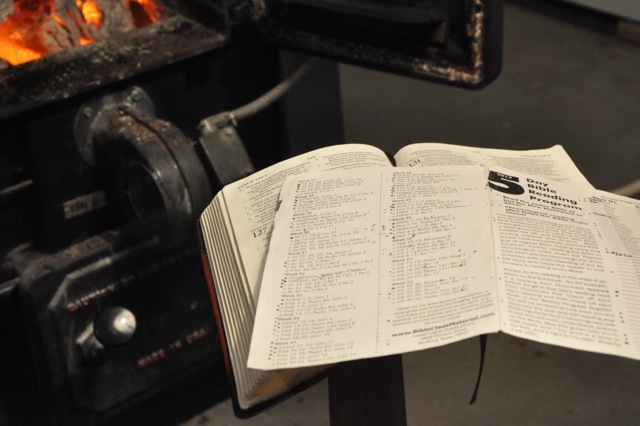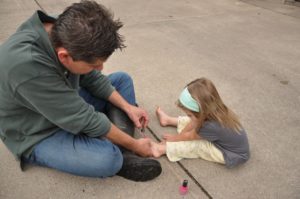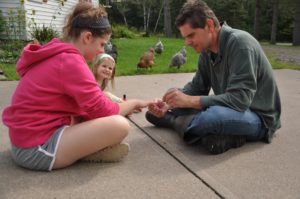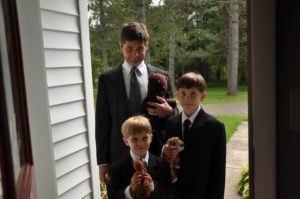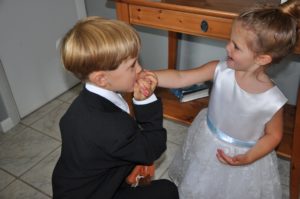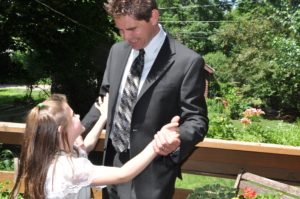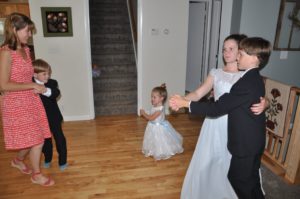I’ve done many things backwards in my life.
Many young people from rural America use their college years for a metropolitan adventure, a chance to experience the quicker pace of the city. (Think: “John Boy” Walton here).
I did the opposite. Having grown up in a city with three major interstate highways (and numbers of lesser roads, just as large), I then spent my college years in the idyllic hills of southern Appalachia. My little college of not-quite 500 students sat on a hill over-looking the town of Dayton, the (brace yourselves) “county seat” of Rhea County, Tennessee.
To the northwest of Dayton ran the Cumberland Plateau, the edge of the Tennessee Valley. Flowing along the southern and eastern borders of the county ran the Tennessee River. A two-lane road ran south to Chattanooga, thirty-five miles away. An even more rustic two-lane road took the occasional traveler north to a place called Watt’s Bar, thirty miles distant. We had a Walmart. And, three years before my arrival, we’d scored a McDonalds.
If a college-boy in Dayton wanted to go anywhere fast, he’d have to make it over the Tennessee River to I-75, that fast and furious traffic artery serving everything moving between Knoxville to the north and Chattanooga to the south. But to get across the river, he’d have to first travel to Chattanooga itself, or Watt’s Bar. Or, he could take the Washington Ferry.
In those days we’d approach the ferry, moving east on County Road 30. We’d see signs: “Road Ends 1,000 Feet,” then “Road Ends 500 Feet”. The limits of our world announced by these signs seemed mistaken to the urban-inclined among us. But after sufficient warning, the road really did end. And even those who doubted the signs would contend with the vast water of the Tennessee River. (Occasionally, we’d hear of a disbelieving city-boy winging his car off the firm ground of the west bank, only to be dredged out in humility.) The more patient traveler would wait for the Washington Ferry itself, a little barge working both banks of the river at inconvenient hours—three dollars a ride, one car at a time.
That was 1990. Today, the Washington Ferry Bridge spans the Tennessee connecting the westernmost towns of the Tennessee Valley with I-75. As freight rolls from one firm bank to the other, the county and towns have grown. We’ve lost the Americana, but we’ve seen the value of a bridge.
In this series for the Faith Bible Adult Education Fellowship we’re answering the question: How do you build a lesson? Or, how do you develop an original lesson that is true (grounded in the Bible), clear (faithful to convey the biblical message in one main idea) and relevant to the need of the learner. We’ll find this process of building a lesson illustrated by the bridge.
(For those with interest, check out the following link to see a picture of the old Washington Ferry: http://rheaheraldnews.com/WeAreRheaCounty2013.pdf.)

Bridges come in different kinds. There’s the ancient, Roman arch bridge like the famous Pons Aelius in Rome. Then there’s the truss bridge with its series of triangles made from straight bars like the Queensferry Crossing Bridge over the Firth of Forth separating England from Scotland. Finally, there’s the modern suspension bridge like our Golden Gate Bridge in San Francisco.
But whether ancient or modern, and no matter how engineered, the bridge has only one purpose: A bridge exists to connect one piece of solid ground to another. Between the two ends of the bridge you can’t walk, drive, or carry freight—not easily, and maybe not at all. Not without the bridge!
The teacher teaching “Christianly” is in the bridge-construction business. Only he’s not working in brick and steel, he’s working in words and ideas, and in living souls being changed by the Spirit of God. These learners—like travelers separated from their destinations by a large body of water or a deep valley—need a bridge. Their bridge must connect them across space (Jesus didn’t come to America), across time (Jesus died and rose again over 2,000 years ago), and across culture (The first readers of the Bible were eastern, not western).
The teacher—like the bridge-builder—must connect to firm ground on two shores. He will anchor his lesson in the ancient “world” of the biblical text on one side and in the present “world” of the learner on the other. The act of teaching the lesson then becomes the business of transporting the learner back and forth across the bridge. On one side they encounter the text in the ancient world, on the other they apply the message of the text to their own world.
None of this will take place without the work of the Spirit who applies God’s Word to our hearts. But without a properly designed lesson, we fail to put the learner in the place to learn from the text and be changed by the Spirit. The Spirit will accomplish His work, but not in our classroom—at least not that day! With so much at stake, we’d do well to think about how we develop our lessons.
How does one go about constructing the lesson? How does the teacher build a bridge?
THE LESSON STARTS IN THE PRESENT WORLD OF THE LEARNER.
In their book Creative Bible Teaching Richards and Bredfeldt famously identify the parts of a lesson—Hook . . . Book . . . Look . . . Took.
If they’d been using our bridge illustration, they might also have noted that each of these movements takes place in a different “world”—either that of the learner or the text.
We start in the present world of the learner. In this opening part of the lesson we want to “hook” the learner. This involves capturing the learner’s attention, but in a meaningful way. It also involves orienting the learner to the main idea of the biblical text.
Methods vary in the Hook. In our own children’s ministry curriculum at Faith, we use tangible objects from the childrens’ world to prepare the children for the lesson: An empty dessert plate we’d like to fill with cake illustrates how (unlike God in Genesis 1-2) we can’t create at will. An antique vase the children aren’t allowed to touch reminds children how some things, or people (like God Himself in Exodus 19-20), are set apart for God’s purposes and very special.
Teen-agers like to argue their case (They want to know why? not what?) and often respond to theoretical and relational role-play. Adults prefer practical exercises that guard them from being embarrassed and draw on their experience. The teacher might begin a lesson on Galatians with what we call the “neighbor nudge”: Turn to one person next to you and describe a time when you’ve seen dissimilar people united in the gospel.
The Hook challenges the assumptions of the learner. It serves the teacher with an opportunity to challenge the learner’s present knowledge, as well as his cultural assumptions (or prejudices). The Hook punctuates the opening of the lesson with a question mark that (like a baited fishhook teasing a fish) invites the learner to follow. The well-used Hook also destabilizes the learner’s world and prepares her for the world of the text. Now the learner is ready to cross the bridge.
THE LESSON CONNECTS THE LEARNER TO THE WORLD OF THE TEXT.
Once the learner has been oriented to the subject, the teacher introduces the Book, the presentation of the passage proper.
Working in the world of the “text”, the teacher will summarize what the biblical author said to his original audience. This will take into account the particular time in salvation history of the first readers. Were they coming to God as Old Testament Israelites, trusting in the promise of Messiah who would come? Were they followers of Jesus living just before the cross? Were they first-generation Christians who, like us, live this side of the cross? Here, the teacher must be deft in summarizes what God has done in up to the point in history where the first readers receive the text. This might involve big-picture survey. Or, it might involve explanation of details in the passage.
Regardless of the level of explanation, everything in the Book flows into and from the main idea of the text. This will be the statement that summarizes what the biblical author said to his first readers. The statement itself will include a subject (what the passage is about) and at least one complement (what the subject does). A lesson on Galatians 2:11-21 might challenge us with the question, “How do we become right with God?” The main idea might read: We become right with God by depending on the work of Christ rather than self-effort. (We’ll take on the mechanics of writing a main idea in a future post.)
Left on this side of the bridge, the lesson becomes a lecture. And that’s how lecturing got its bad name! But if the teacher leads the learner across the bridge one more time, the learner will find that he now really has something to apply.
THE LESSON TRAVERSES THE CHASM TO APPLY THE TEXT.
When the teacher arrives at the Look, he has likely taught the bulk of his lesson. But since he hasn’t applied, he hasn’t taught.
The teacher must now show the learner what it “looks” like to unpack the main idea of the passage back in the present world of the reader. This involves thinking about what the main idea looks like on this side of the cross—as a follower of Jesus having been saved by grace through faith in Christ alone.
This can be challenging, particularly when working in the Old Testament. In Genesis 27-28:5 we read of Jacob’s deception of his father, Isaac. Though Jacob, at times, demonstrates little more character than his unspiritual brother, Esau, God will be faithful to keep His covenant promises. God will preserve Jacob. The main idea of Genesis 27-28:5 might read: God always kept His promises, even when the descendants of Abraham didn’t obey Him.
The learner must now “look” at this summary of the passage in his world. When he considers its truth, he realizes that the Father’s provision of Jesus took place before he had ever obeyed God and despite his own sin. The Old Testament passage about Jacob’s sin has taught him something true about God that only becomes clear at the cross. Even more, the application of the passage continues into the area of practical holiness. Having had the righteousness of Christ applied to his account, the learner now realizes how his own obedience does not alter his righteous position with God. Just as God’s covenant with Abraham did not hang in the balance when Jacob sinned, God will accomplish all that He has purposed to do in Christ.
The Look now allows the teacher to make contemporary the Bible-based main idea for the learner in the present-day world: God always keeps His promises, even when we don’t obey Him. This statement becomes the main idea of the lesson.
Though even many good lessons stop here, there is yet another step necessary to round out a fully gospel-centered, “Christian” lesson. As we saw in our post What Makes Our Teaching Christian?, biblical truth must be applied to both the head (the intellect) and the heart (the affections and desires). Once again, this is the domain of the Spirit. We can’t change peoples’ hearts. But we can (we must!) invite them to the place where they can do business with the Spirit through the word.
We finish the lesson with the Took where the learner demonstrates that the lesson has actually “took”. This will be accomplished through the writing of an aim that serves as a kind of target for the teacher throughout the lesson.
At the level of the intellect the aim requires the learner to interact once again with the passage. Taking Genesis 27-28:5 once again, the aim could read: The learner will explain, from Genesis 27-28:5 how God showed Jacob that He will always be true to His promises. This is the “head” aim to be completed in the last part of the lesson. The learner demonstrates, through his explanation of God’s faithfulness to Jacob, that he understands the passage at an intellectual level.
That’s not small change! We’ve really done something when the learner can demonstrate understanding. But for the teacher to really know that he’s scored a hit, the learner needs to demonstrate heart awareness. This “heart” aim will build on the “head” aim and require the learner to demonstrate that she is at least aware of the nature of the heart change called for in the text.
In the Genesis 27-28:5 passage, the “head” and “heart” aims might be combined to form the following: The learner will explain, from Genesis 27-28:5, how God showed Jacob that He will always be true to His promises (head) and describe why it’s important to value God’s fulfilled promise of Jesus above her own appetites (heart).
The lesson now ends with consideration of the gospel. The learner, like Jacob, will be asked to consider his own desires in the light of God’s promises. Unlike Jacob—who lived before the cross—he’ll look back in time to the cross to see the aim of his true desire.
The lesson has now gone from the world of the learner to the world of the biblical text and back again. The learner has been asked to consider his own need in light of the gospel. The teacher has used the lesson to build a bridge.
The bridge illustration gives us a big-picture look at how lessons are developed. Now that we’ve surveyed the whole process, we’ll break it down in the next seven post with practical examples and concrete action steps.
For the moment, consider the following questions as you think about the lesson as a bridge.
Why don’t you leave your thoughts in the “comments” box? Maybe we’ll unpack these thoughts in our next meeting of the “The Fellowship”.

How does the picture of the lesson as a bridge help you understand the difference between the lecture and the kind of lesson we’re proposing here?
Why is it absolutely imperative to find firm ground in the “world of the text”? (That is, why do you have to be absolutely clear in understanding what the text meant to its original hearers?)
Why do we start and end in the “world of the learner”?

